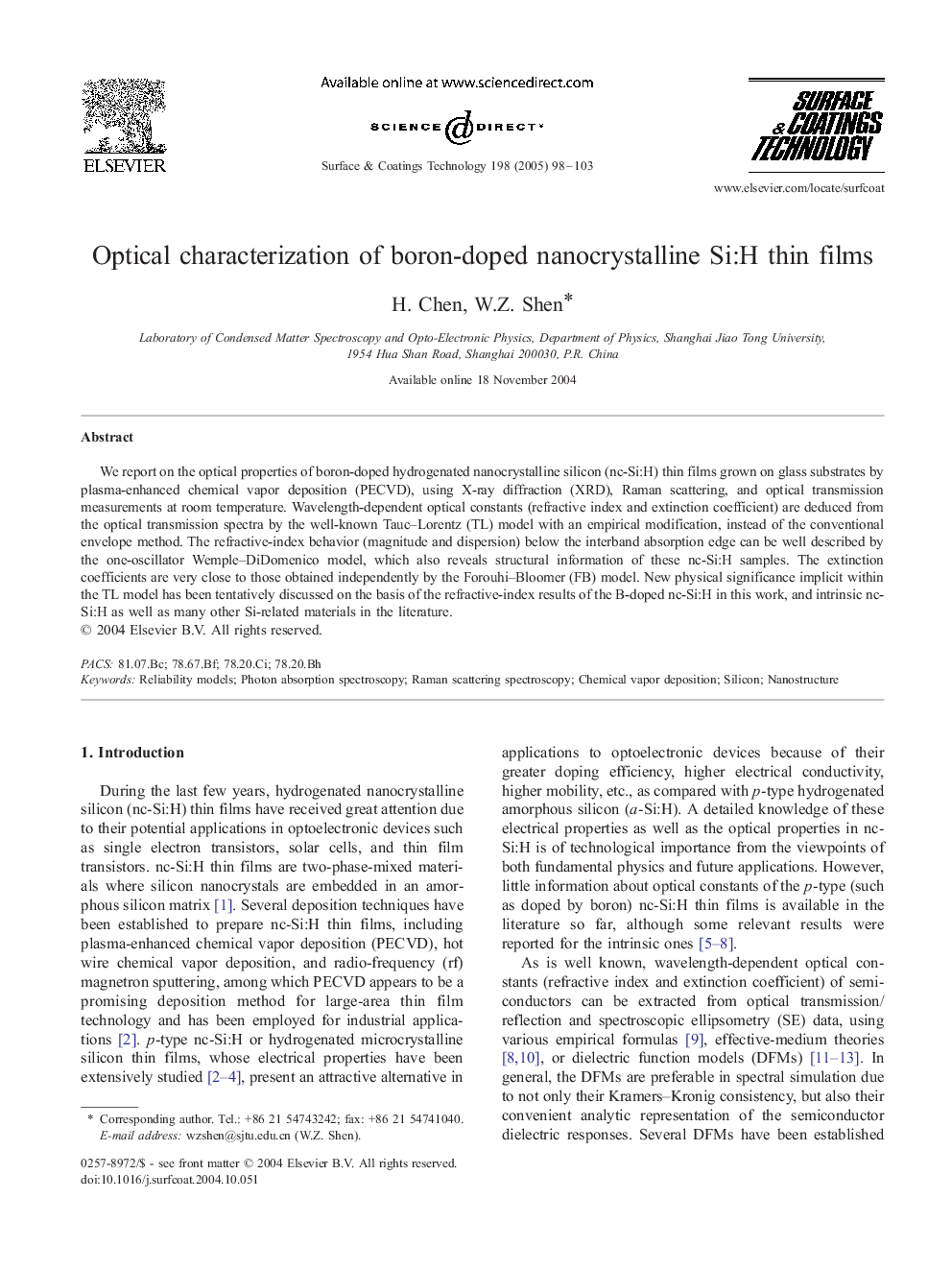| Article ID | Journal | Published Year | Pages | File Type |
|---|---|---|---|---|
| 9809540 | Surface and Coatings Technology | 2005 | 6 Pages |
Abstract
We report on the optical properties of boron-doped hydrogenated nanocrystalline silicon (nc-Si:H) thin films grown on glass substrates by plasma-enhanced chemical vapor deposition (PECVD), using X-ray diffraction (XRD), Raman scattering, and optical transmission measurements at room temperature. Wavelength-dependent optical constants (refractive index and extinction coefficient) are deduced from the optical transmission spectra by the well-known Tauc-Lorentz (TL) model with an empirical modification, instead of the conventional envelope method. The refractive-index behavior (magnitude and dispersion) below the interband absorption edge can be well described by the one-oscillator Wemple-DiDomenico model, which also reveals structural information of these nc-Si:H samples. The extinction coefficients are very close to those obtained independently by the Forouhi-Bloomer (FB) model. New physical significance implicit within the TL model has been tentatively discussed on the basis of the refractive-index results of the B-doped nc-Si:H in this work, and intrinsic nc-Si:H as well as many other Si-related materials in the literature.
Keywords
Related Topics
Physical Sciences and Engineering
Materials Science
Nanotechnology
Authors
H. Chen, W.Z. Shen,
